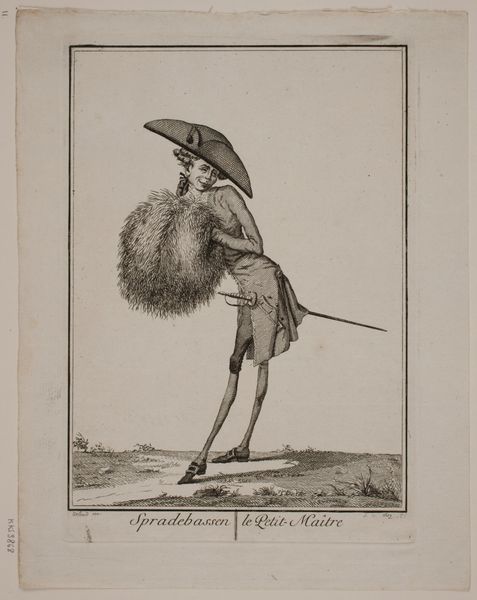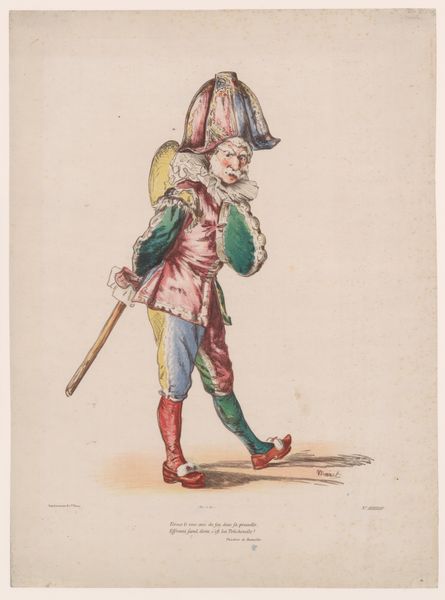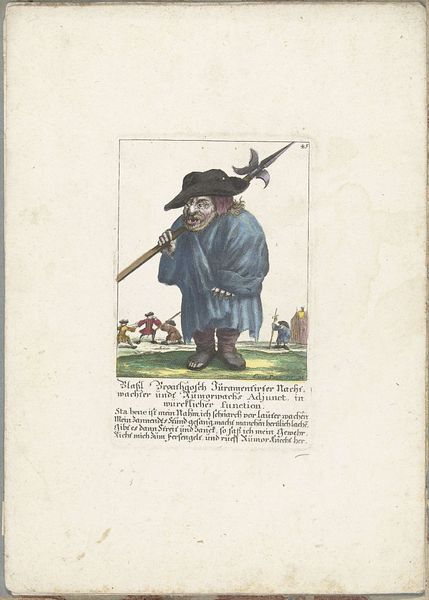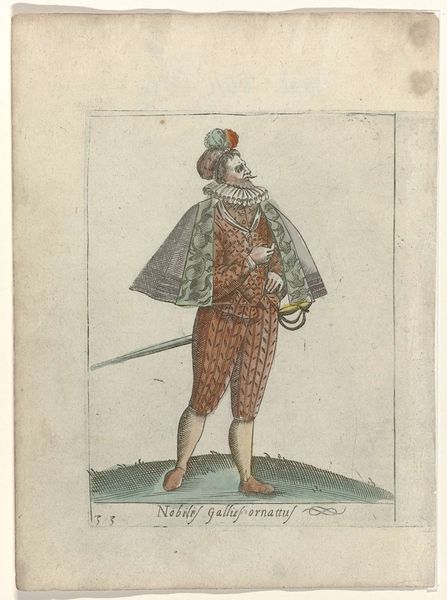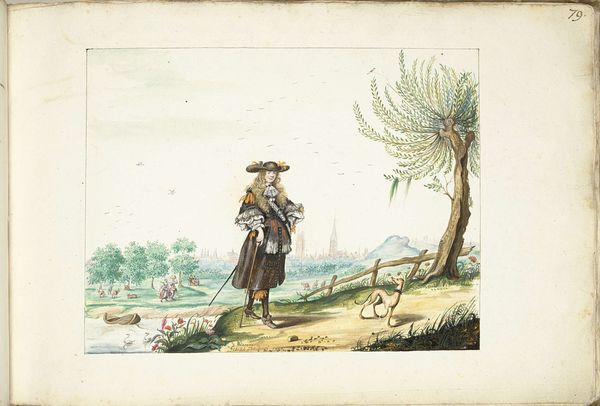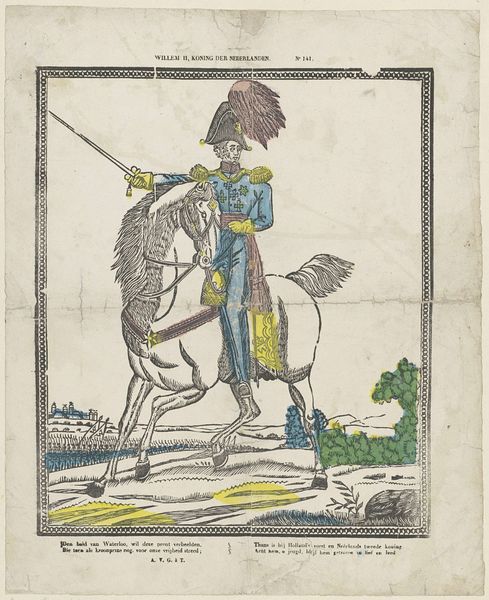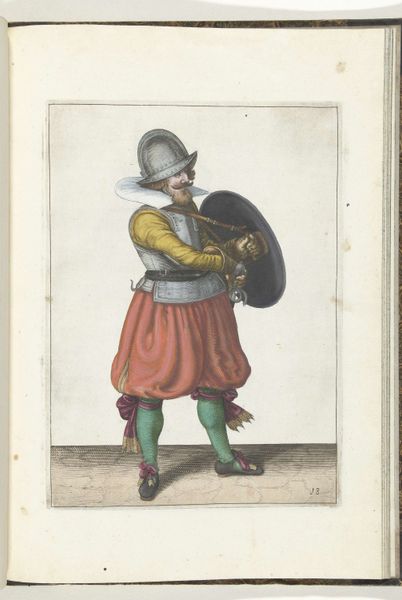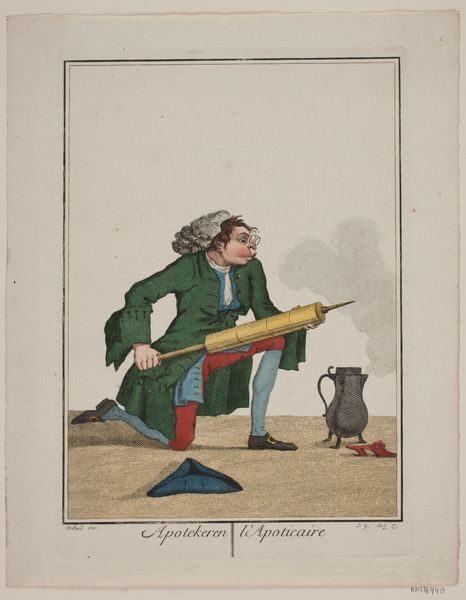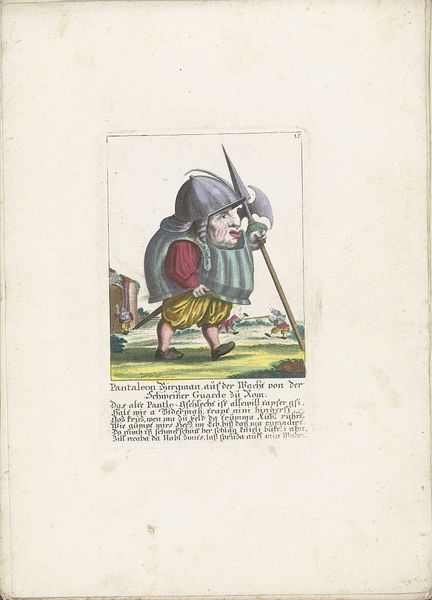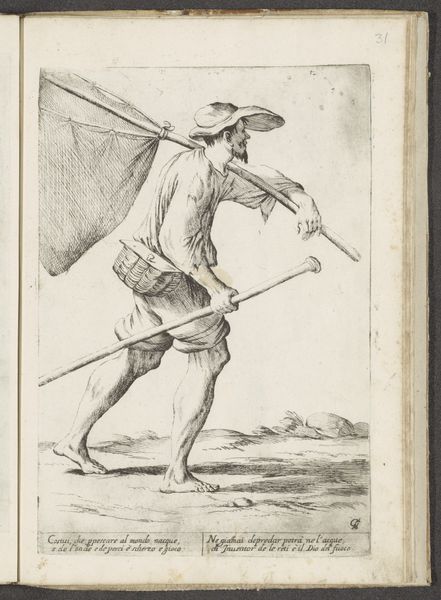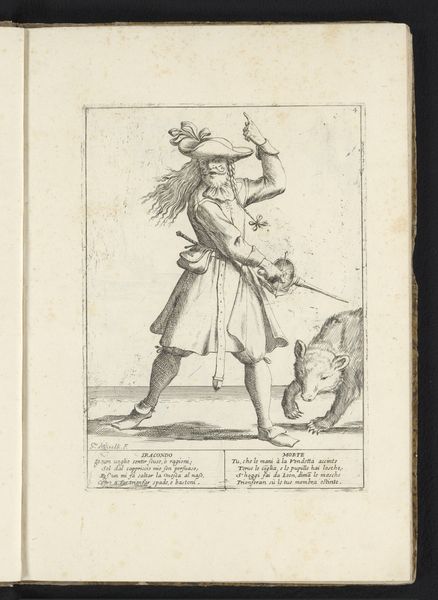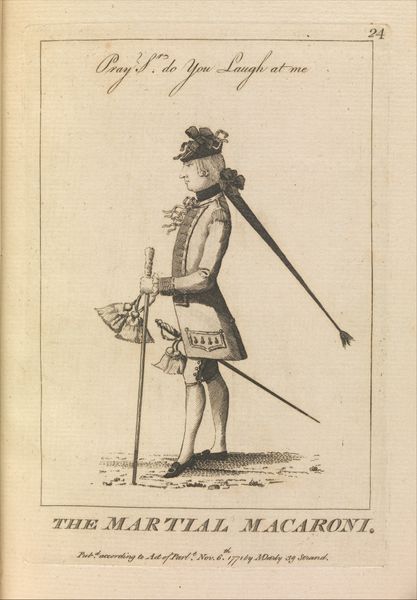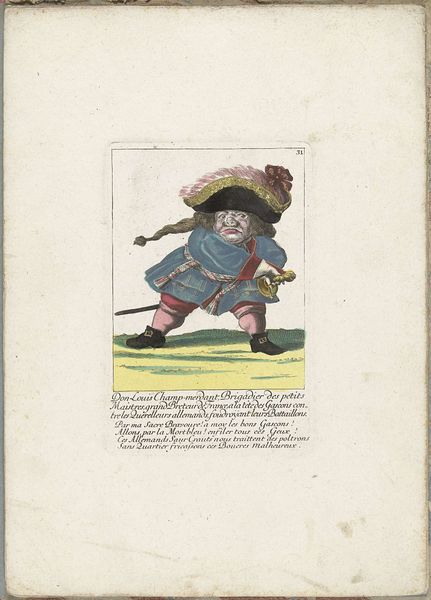
Dimensions: 222 mm (height) x 157 mm (width) (plademaal)
Editor: Here we have "Spradebassen" by Georg Christian Schule, created around 1778-1780. It's a print, primarily in coloured pencil, depicting a rather foppish figure. The elongated proportions and slightly absurd fashion choices create a satirical feel. What can you tell us about the context of this work? Curator: It's a fascinating piece of social commentary. "Spradebassen," which can be understood as “Show-off,” highlights the anxieties of the late 18th century regarding social mobility and the aristocracy. The exaggerated figure with his large muff and sword satirizes the "Petit-Maître," a type of young, fashionable, and often pretentious man who imitated aristocratic styles, often without the birthright or wealth to truly belong. Editor: So it's making fun of someone trying too hard to be fashionable and upper class? Curator: Precisely. Prints like this played a significant role in shaping public opinion and ridiculing social climbers. Consider the French Revolution, which was brewing during this period. Visual satire like this became a powerful tool for critiquing the existing social order, even subtly. The exaggerated features also relate to the style of caricature which had become quite popular as the 18th Century progressed. Editor: I hadn't thought about the political implications. Do you think the fact that it's a print influences its message? Curator: Absolutely. Printmaking allowed for wider circulation and lower costs, making such critiques accessible to a broader audience than paintings would have been. These images were disseminated, reproduced, and debated in coffee houses and salons. Who got to decide whose images are viewed widely became increasingly contested during this period. It makes one wonder what was going on socially that drove the public's interest and tolerance for what were effectively published critiques. Editor: That's a great point about accessibility. So, it's not just a funny drawing; it's part of a broader social and political conversation. Curator: Exactly. It demonstrates the power of art, even seemingly lighthearted caricatures, to reflect and influence social values. I think in examining a figure that on first appearance is comical, one needs to dig deeper into the function of printed images in public debate. Editor: I will definitely be examining artwork a little deeper from now on. Thanks for your perspective!
Comments
No comments
Be the first to comment and join the conversation on the ultimate creative platform.
